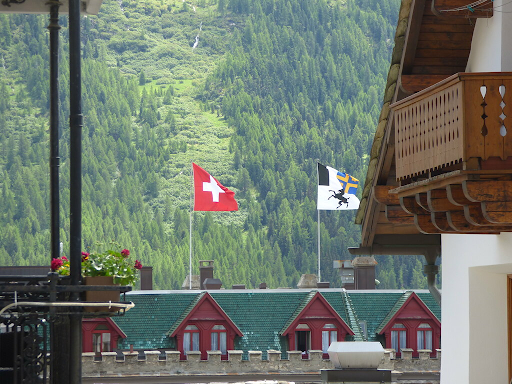By: Anton Kozyrev
Dr. Brendan Cronin has seen it all.
After a decades-long career in the hospitality industry that took him all over the world, including Ireland, Switzerland, Singapore, and Macau, he assumed a professorship at Endicott College in the United States. In this role, Prof. Cronin taught hospitality management and has had the unique experience of witnessing an entire industry grow and transform from various perspectives.
Irish by birth, and Swiss by marriage, Dr. Cronin is now retiring and moving to Switzerland. And it is precisely in Switzerland that the hospitality industry continues to intrigue tourists and business leaders alike. Just before leaving for Geneva, he was kind enough to provide an in-depth overview of the history of the nation’s alpine tourism industry.
At the turn of the 20th century, tuberculosis was a rampant health issue throughout Europe. Much of this could be attributed to cramped living quarters and a generally unsanitary environment. By contrast, the Swiss Alps provided clean air, low humidity, and sunshine. And, by virtue of being above cloud cover, the air was crisp and dry. Such were the conditions when a massive health experiment was undertaken — that of constructing sanitariums within the Swiss Alps, and housing tuberculosis patients in these aforementioned sanitariums. After spending time experiencing fresh mountain air, a vast majority of tuberculosis patients’ symptoms miraculously improved, and they were cured. By word of mouth, these recovered patients spread news of Swiss mountain sanitariums, and an association between the Swiss Alps and healthy living was established.
As such, many prominent tourist destinations in the Swiss Alps today originated as centers for the treatment of tuberculosis and other diseases — including Davos, Switzerland.
“Davos … used to be famous for its sanatoriums — they arranged the rooms all in a long line facing south, with a balcony for all the rooms. During the day, [the patients] would be wrapped up in blankets with only their faces poking out and wheeled out in their beds onto the balcony. The balcony and doors were specially-built so they could be wheeled out and remain there all day long, no matter the temperature,” he said.
The sanitariums’ patients came from far and wide for treatment, including notable figures such as Tsar Nicholas II of the Russian Empire — who, according to Cronin, would slip in unnoticed through a secret door and tunnel, lest the public discover his ailing health.
Granted, not all patients were cured, of course. And this led to an intriguing historical detail in many Swiss graveyards.
“The people who didn’t survive, in Davos and other alpine towns that had sanitariums, you’ll find English names on the gravestones. At the time, there was no procedure for transporting a body back for burial, so they were buried in Switzerland,” Cronin said.
The transition of this alpine economy from one focused on treatment of illnesses to that of outdoor entertainment was ultimately brought about by a critical scientific discovery. The discovery in question? Penicillin. Prior to the Second World War, the discovery of penicillin in 1928 by Alexander Fleming proved to be revolutionary in the treatment of bacterial infections and drastically lowering deaths. The need for sanitariums such as those in Leysin and Davos dropped precipitously. However, the Alps had already developed a strong association with a healthy lifestyle — setting up a well-structured transition into the alpine tourism industry. Sanitariums were converted into luxury hotels, many of which are still in operation today.
Cronin himself worked at a luxury hotel that had been repurposed from a sanitarium.
“I worked in Davos at the Schatzalp, it had been originally built as a sanitarium. You could certainly still see many trace elements of the sanitarium when I worked there — it had the large balconies facing south, and there was also a morgue,” Cronin said.
This model of luxury alpine tourism has benefited Switzerland’s economy so far, but the industry now faces several complex challenges — exacerbated, of course, by the COVID-19 pandemic.
A major issue going forward concerns the looming specter of climate change. As an industry that heavily relies on seasonal patterns of nature to supplement winter, spring, and summer attractions, the increased variability of weather conditions threatens the economic model of alpine tourism. After all, if Swiss travel destinations are unable to guarantee snowfall throughout specific periods of the year, they run the risk of losing confidence from tourists, which in turn diminishes Switzerland’s near-legendary reputation as a skiing destination. In this sense, nature is both the tourism industry’s greatest asset and greatest threat.
Additionally, Cronin talks of a growing sentiment among local Swiss concerning the rapid influx of people that the tourism season tends to bring about. Towns’ seasonal population in Switzerland may swell to multiple times that of their normal, year-round population. This leads to unpredictability and instability with regard to consumer and residency trends, making it more difficult for local businesses to organize and plan out their business operations. An additional consequence of seasonality is the prevalence of unoccupied homes, purchased by wealthy foreigners who only reside in these homes during their desired season. This further harms the economy. The Swiss government is pursuing actions to clamp down on this, and it will take time to see the scale of impact that these reforms will have.
As seen with the tourism industry in general, a threat can be seen in new forms of entertainment developed during the pandemic and many iterations of lockdowns seen around the world. As populations were kept at home and unable to explore the world, they explored and experienced the world in other means. TV consumption rose during this time, with streaming providers such as Netflix and Disney+ experiencing growth in viewership. Other digital services provided new forms of entertainment from the safety of one’s home as well. As a side effect of being unable to travel abroad, domestic tourism became a compelling option.
As economies and nations begin to re-open their borders and attempt to revive a pre-COVID economy, it remains to be seen whether would-be tourists still want to travel as much as they did, or if they will be enticed by the new, more local opportunities they experienced during their respective lockdowns.




